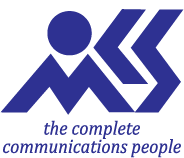By doing market research, businesses can make smarter decisions, create effective marketing strategies, and succeed in their industry.
This guide will walk you through different market research techniques, showing you how to use them to better understand your market.
1. Surveys:
Get Direct Feedback!! Surveys are one of the easiest ways to collect direct feedback from a group of people. You can conduct them online, over the phone, in person, or by mail. They are great for gathering data that can be measured and analyzed.
Tips
- Keep your questions clear and to the point to get honest answers.
- Make sure your survey reaches the people who represent your market.
- Look for patterns and trends in the responses to gain insights.
Benefits:
- It is a cost-effective approach especially online surveys, which can reach many people quickly.
- It is useful for many purposes like checking customer satisfaction or testing new ideas.
- It provides data that you can measure and analyze for trends.
2. Focus Groups
Focus groups involve a small group of people (usually 6 to 12) discussing a topic guided by a moderator. This method helps you understand opinions and feelings in a more detailed and interactive way.
Tips:
- Always pick people who represent your target market for varied insights.
- Outline key topics and questions to keep the conversation on track.
- The moderator should encourage everyone to participate and manage the discussion.
Benefits:
- Gives you a better understanding of what people think and why.
- You can ask follow-up questions on the spot.
- Participants can share ideas and respond to each other, leading to richer insights.
3. Interviews
Interviews are one-on-one conversations between a researcher and a respondent. They can be structured, semi-structured or unstructured and are great for getting detailed insights.
Tips:
- Have a set of questions ready, but be flexible to follow the conversation.
- Interview those who can give you valuable information.
- After the interviews, look for common themes in the answers.
Benefits:
- Lets you dive deep into specific topics.
- You get tailored insights from each person’s experience.
- Can adapt to the flow of conversation for more natural responses.
4. Observation:
Observation involves watching how people behave in a natural setting. This method helps you understand how customers use products or services in real life, without interference.
Tips
- Choose the right place, where and when you will observe, like in a store or at home.
- Take notes on their behaviors.
- Look at what people do to understand their needs and preferences.
Benefits:
- Shows you how people really act, without them being influenced.
- You observe without disrupting the environment.
- Gives you concrete examples of how people use products or services.
5. Experiments:
Experiments involve changing one or more factors to see what happens. This method is useful for testing ideas and understanding how changes affect outcomes.
Tips:
- Decide what you’ll change (independent variable) and what you’ll measure (dependent variable).
- Keep everything else the same to see the effect of your changes.
- Use the data to see how the changes impacted the results.
Benefits:
- Helps you see how specific changes lead to specific results.
- Shows you the direct impact of your changes.
- You can test the same thing in different situations to confirm results.
6. Secondary Research:
Secondary research involves looking at data that’s already out there, like reports, studies, and industry data. It’s a cost-effective way to gather insights without doing new research.
Tips:
- Look at trusted sources like industry reports and government publications.
- Interpret the information in the context of your business needs.
- Use this data to complement your primary research.
Benefits:
- Saves time and money by using existing information.
- Gives you a broader view of market trends and competition.
- Helps refine your questions and identify gaps in knowledge.
7. Competitive Analysis:
Competitive analysis involves studying your competitors to understand their strengths, weaknesses, and strategies. This technique helps you find opportunities and avoid threats in your market.
Tips
- Identify your direct and indirect competitors
- Look at how competitors market, price, and offer products or services.
- Compare your business against others to find areas for improvement.
Benefits:
- Gives you a clear picture of the competitive landscape.
- Helps you find gaps in the market.
- Identifies threats from competitors so you can plan accordingly.
8. Social Media Listening:
Social media listening involves monitoring online conversations about your brand, competitors, and industry. It provides real-time insights into customer opinions and trends.
Tips:
- Focus on the social media sites where your audience is active.
- Track relevant hashtags, keywords, and mentions.
- Respond to feedback and use the insights to guide your marketing strategy.
Benefits:
- Provides immediate insights into customer thoughts and trends.
- Helps you understand how people feel about your brand.
- Spots new opportunities and potential issues early.
9. Mystery Shopping:
Mystery shopping involves sending someone to evaluate the customer experience at your business or a competitor’s. It gives you firsthand insights into service quality and the overall customer experience.
Tips:
- Know what you want to learn about the customer experience.
- Select people who resemble your typical customer.
- Use the shopper’s experience to find ways to improve service.
Benefits:
- Provides a true view of the customer journey.
- Helps you compare your service against competitors.
- Offers specific feedback to improve customer service.
Conclusion
Market research is a must for any business to succeed. By using a mix of surveys, focus groups, interviews, observation, experiments, secondary research and other techniques you can gain a full understanding of your market, audience, and competitors. This knowledge helps you take smarter decisions, create successful marketing strategies, and grow your business.





